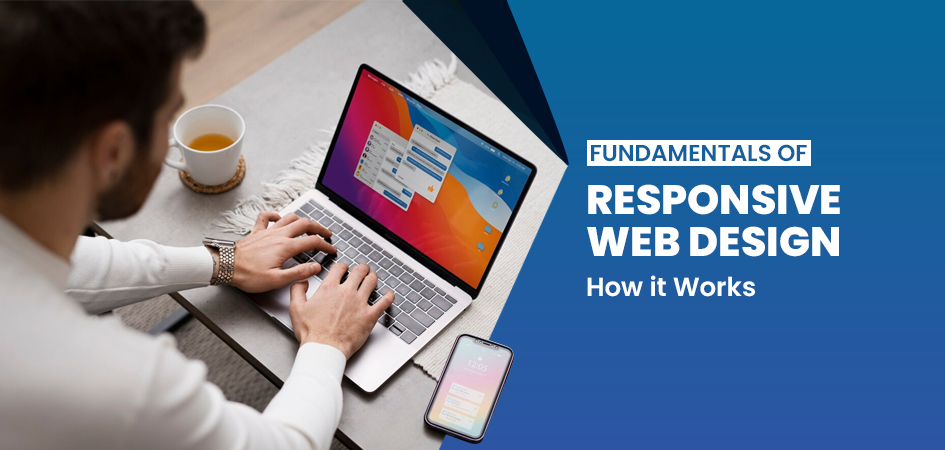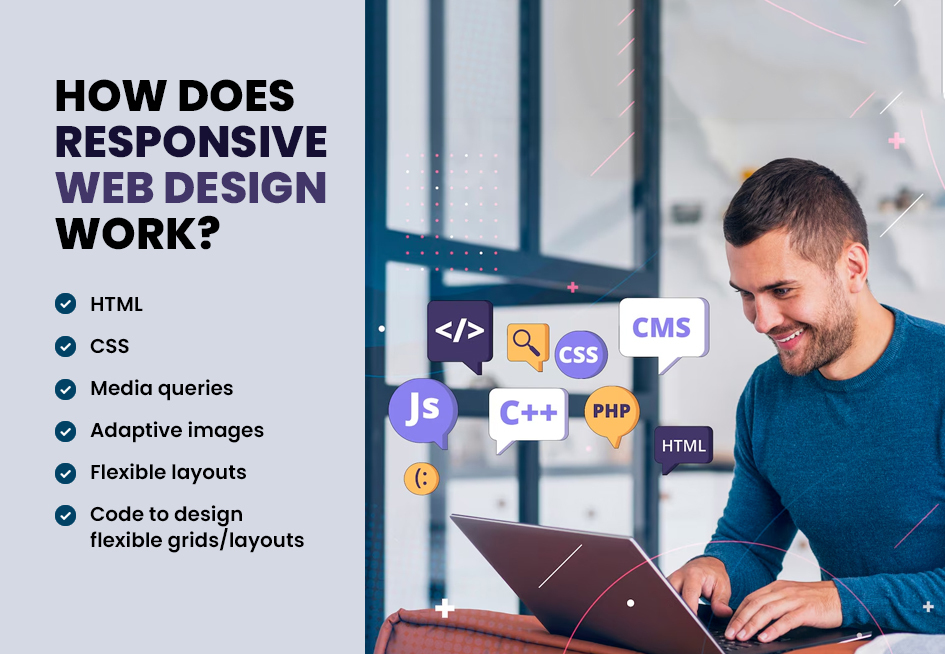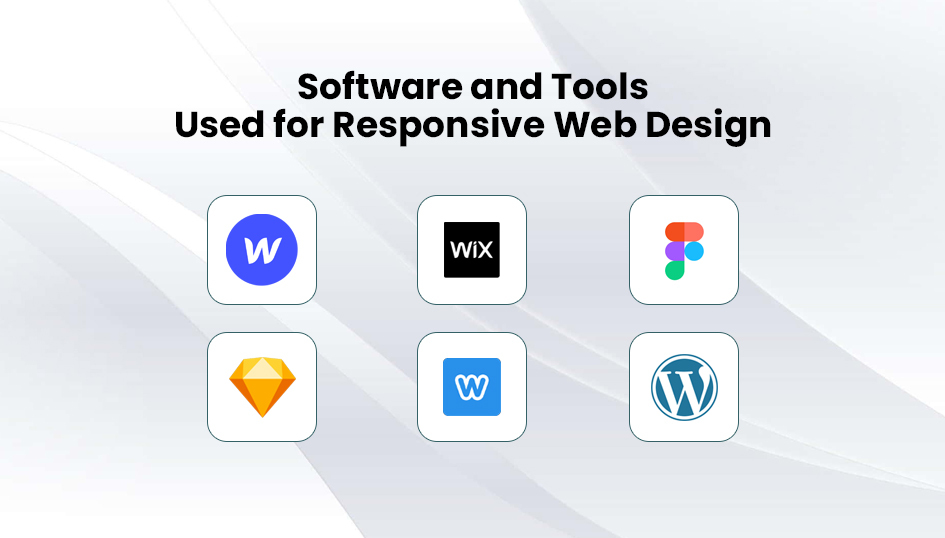
Every website needs various versions to display and function on different devices. Over 60% of website visitors use mobile phones for browsing. This is why having a responsible website design is essential for your business. Responsive design allows websites to adapt to different screens without developing separate websites for each screen size.
In this blog post, you will learn everything you need to know about responsive web design. Stay engaged!
What is a responsive website?
A website that automatically adjusts to different sizes of screens is responsive. It is about designing the website to be revamped according to the user’s screen. The idea behind a responsive web design is to preserve the functionality of the website on any device.
This is achieved by using adaptable designs, images, layouts, and other media forms on the website. A responsive website should be adjustable for desktops and mobile phones.
What is the purpose of responsive web design?
With a responsive web design developers create a single website that fits all devices. It provides convenience to web designers, developers, businesses, and the end user. Rather than developing different versions of a single website for different screens, developers can focus on creating a single responsive website.
A responsive design leads to a better user experience since most users search for digital media on their mobile phones. A responsive web design also benefits search engine optimization since search engines prefer websites with a user-friendly design that looks good on all devices.

It has a faster loading speed, better layouts, and a seamless design that makes it suitable for search engine rankings and provides a flawless user experience.
How does a responsive web design differ from an adaptive design?
The terms responsive and adaptive design are often used interchangeably, however, there are few major differences when it comes to the technicality of both. Here’s how they differ from each other:
- A responsive web design firmly adjusts the page layout based on the screen size. Whereas an adaptive design ascertains the screen size and loads the right layout of the page.
- With responsive web design, you only create one responsive layout for each device. However, an adaptive design means you need to create different layouts for every device.
- Responsive web design applies CSS media queries to change page layout while an adaptive design uses predefined layouts built on breakpoints that don’t respond once loaded.
- A responsive design is more flexible while an adaptive design is based on the preset layouts designed specifically for various devices.
- A responsive web design is more suitable for new websites as they will not have to design each page separately.
- Whereas, an adaptive web design works well on websites that might need regular updates.
- Responsive web design is well suited for larger websites as it allows more convenience to designers, however, you may lose control over designing specific viewports. Whereas, adaptive web design is mainly used to reconstruct an existing website to make it mobile-friendly, allowing the designer with more control over the design.
How does responsive web design work?

Let’s move on to the technical part of the responsive web design. Here’s how different programming languages and mechanisms make a responsive web design possible:
- HTML (HyperText Markup Language): HTML is the programming language that builds the structure and content on the responsive web page.
- CSS (Cascading Style Sheets): CSS is used to shape the layout and design of HTML components on the page.
- Media queries: Media queries are responsible for the alterations of the web design based on the screen size.
- Flexible layouts: Flexible layouts and grids are used to readjust the content to fit various devices.
- Adaptive images: Adaptive or flexible images that do not have a fixed size make it easier to adjust according to the screen size.
- Code to design flexible grids/layouts: Lastly, to resize and adjust the page content to different devices or windows, various coding software is used, for example, WordPress and Squarespace.
Software and tools used for responsive web design

Numerous software and tools are available to designers and programmers to create a responsive web design. Here are some of the majorly used software:
1. Webflow
It is a design software for creating responsive web design. In Webflow you can build and edit the designs using the interface without any code. You can export the designs as HTML and CSS files.
2. Wix
Wix is a web development software that allows us to create professional websites without writing the code. It has various pre-built templates and designs that can be used to make mobile-friendly website designs.
3. Figma
Figma is a server-based tool used to create professional designs. It is a cloud-based tool that can be used to collaborate with a web development team. It is a user-friendly tool that allows you to create and test the layouts with ease. It saves the designs in the format of PNG and SVG files.
4. Sketch
Sketch is a professional vector design tool. With a range of design layouts for different types of websites, it is mainly based on user interface. It is an easy-to-use tool for responsive web design.
5. Weebly
Weebly is a free web development software with a drag-and-drop editor that enables you to create responsive themes to adapt to any device.
6. WordPress
WordPress is a user-friendly software that does not require writing code. With a range of features and customizable templates, it allows you to readjust the page content to fit any screen.
Summing Up
A responsive web design is crucial to deliver a seamless user experience without creating different versions of the same website.Search engine algorithms prefer responsive websites to rank higher on the search page. It not only improves user-friendliness but also helps in the search engine optimization of your business website.
As discussed in the blog, responsive web design is majorly used by designers and developers to create mobile-friendly websites.If you are looking to create a responsive website for your business, why wait? Contact our expert team at WillShall today!

I bring a wealth of knowledge and experience to WillShall Consulting with two decades of expertise in Website Design, Development, and Digital Marketing, My journey has been marked by a passion for creating innovative web solutions that not only meet but exceed client expectations. As an avid analyst, I dedicate myself to understanding each customer’s unique needs, ensuring that our web solutions are not just functional but exceptional.





 Call Us
Call Us Email Us
Email Us Video Call
Video Call




